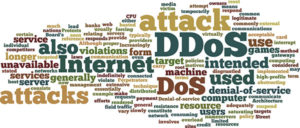 Cyber security can either make or break an organization; everyday, corporations and businesses face threats from hackers and malicious software that can destroy vital data such as company accounts and finances and even steal sensitive information like personal information of employees and clients. As a result, organizations spend millions in setting up countermeasures to deal with such threats.
Cyber security can either make or break an organization; everyday, corporations and businesses face threats from hackers and malicious software that can destroy vital data such as company accounts and finances and even steal sensitive information like personal information of employees and clients. As a result, organizations spend millions in setting up countermeasures to deal with such threats.
It’s often said that knowledge is power and that’s true; if you want to defeat your enemy, you must get to know your enemy first. Therefore, it’s crucial to understand the common types of cyber threats faced by businesses, before embarking upon a campaign to defeat them. Without further ado, here are the most common cyber security threats that affect information systems.
· Malware
Malicious programs like adware, malware, and spyware are quite simple in their code, but complex in their function. How many times have you struggled with annoying pop-ups or downloads that you never authorized? These programs are usually installed on your computer through those methods.
Sometimes, these programs find their way into information systems by posing as virus removing tools. They steal confidential information, encrypt important files or restrict access to information systems, allowing hackers to control them remotely. They also slow down a computer as they are constantly running in the background, consuming processor power.
· DDoS
A DDoS or distributed denial of service is a tool or program utilized by hackers to deny access to a website; hence, the term ‘denial’ is used. In some cases, the purpose is to harm the reputation of an organization by making its website slow or completely inaccessible. It is also known as a DDoS attack.
It works by overloading the domain of the website through multiple access requests generated simultaneously in real-time. This puts a load on the website’s server; websites are hosted through a hosting service that provides either dedicated or shared hosting. When this happens, the website loads very slowly or some situations, it doesn’t load at all and goes offline.
DDoS uses botnets with fake IP addresses to generate requests to a website. Hackers can also hack your information system and use it as a bot.
· Browser Plug-ins
One of the most common methods employed by hackers, browser plug-ins are small programs that perform specific tasks to improve your browsing experience. Although, many browser plug-ins are third party, licensed, and genuine, there are many which do just the opposite of what they claim. With browser plug-ins, you can browser anonymously, open different file formats or even copy/paste text from a website that doesn’t allow it.
However, others can wreak havoc on the hardware and software of your information systems and destroy or steal vital data and information. Therefore, you have to implement effective strategies to deal with such cyber security threats to protect the integrity and efficacy of your organization.

